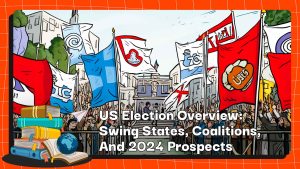Details Of The Project Blur: The Airdrop Reappears The Wealth Effect
The long-awaited Blur airdrop on the entire network finally came to an end in the early morning of February 15, 2023, Beijing time, and 360 million Blur tokens were given back to the NFT community and Blur users. According to feedback from the community and social media, there are quite a few people who have received airdrops of hundreds of thousands of Blur tokens. Even users who have not used Blur airdrops for the purpose of non-heavy use of Blur products have received thousands to tens of thousands of dollars. An unprecedented airdrop wealth effect.
According to data from Dune Analytics, as of 13:00 on February 15, Blur airdrops have been claimed by 80.15%; 35.8% of the airdrops were between 100 and 1000; 39.6% of addresses received airdrops between 1,000 and 10,000; and 7.8% received airdrops between 10,000 and 100,000. At present, the top three wallets for airdrop applications have received airdrops of 3.2 million BLUR ($2.46 million), 2.97 million BLUR ($2.28 million), and 2.5 million BLUR ($1.92 million), respectively.
According to the information on the official website, this airdrop is open to all trading users, care package holders and creators from October 19, 2022, to February 14, 2023. Additionally, users who join its waitlist or participate in the private beta in May 2022 will automatically receive additional Blur airdrop allocations. The airdrop claim period is 60 days, and users who do not claim by then will miss the airdrop.
In addition, this airdrop is only the first round of airdrops officially released by Blur to the community, and the second round of airdrops has already begun. From now until March 14, users who bid for collections and list NFTs on the Blur platform will receive Double points.
Therefore, users who missed Blur’s first airdrop can now participate in its second airdrop. In this article, Coincu will give you a detailed explanation of the first round of Blur’s airdrop launch, its economic model, governance, market value, etc.
Blur’s First Round of Airdrop Launched
Long before the release of the Blur airdrop, several centralized exchanges such as Coinbase, OKX, and Huobi issued listing announcements, making the market full of expectations. Currently, Binance is the only mainstream exchange that has yet to issue a listing announcement. At the same time, community users are also actively digging the Blur token contract address to find the official contract before going live.
According to Etherscan browser data, the cryptocurrency market maker Wintermute multi-sig wallet address received 15 million Blur tokens before the Blur airdrop went live. Therefore, the community speculates that Blur will officially hand over the market-making business to Wintermute.
Blur’s official airdrop of Blur tokens, which was originally scheduled to go online at 1 am on February 15, was postponed to 2:30 am for some reason. After the official launch, the price of Blur tokens on the centralized exchange OKX rose from $0.1 to $8.3 and on Huobi from $4 to $10.
And because of the overload of users, the airdrop claiming page on Blur’s official website crashed for a while, and users could not open the airdrop claiming interface to claim it normally, and it could be used normally after more than half an hour from the online time.
As a result, the Ethereum network Gas fee soared to around 1000Gwei. According to the ultrasound website, in the past 24 hours, the contract for receiving Blur airdrops burned 980 ETH, ranking first in the entire network.
According to Blur’s official information, as of the time of airdrop collection, a total of 146,823 users used Blur to trade NFTs. The Blur protocol has processed more than $1.18 billion in GMV since its launch, excluding fake transactions.
Economic model
According to Blur’s official documents, BLUR tokens are issued by the foundation and are utility tokens. BLUR tokens give the community control over the DAO. Token holders can manage the key to value accumulation and distribution in the Blur protocol by voting themselves or entrusting voting parameters. The total number of BLUR tokens issued is 3 billion, which will be released within 4-5 years.
Among them, 51% are allocated to Blur community members; 29% are allocated to past and future core contributors, with a release cycle of 4 years; 19% are allocated to investors, with a release cycle of 4 years; 1% is allocated to advisory members, and the release cycle is 4 years.
BLUR tokens distributed by core contributors and launch partners will be vested on the same schedule with the addition of a 4-month cliff. The advisor’s BLUR allocation will vest in 48 to 60 months, with a 4 to 16-month cliff setting. The release speed is specifically 40% of the total supply in the first year, 30% of the total supply in the second year, 20% of the total supply in the third year, and 10% of the total supply in the fourth year.
12% of BLUR tokens were distributed to the community in the first round of airdrops, and another 39% of BLUR tokens were distributed to the community through contributor grants, community initiatives, and incentive programs. Of this 39%, 10% has been allocated to the incentive budget for the next launch incentive. If all incentive budgets are used up, more incentive budgets can be allocated by voting.
In addition, Blur will officially launch a proposal for a negotiated fee rate (up to 2.5%) after 180 days, and the community will then decide on the negotiated fee rate.
It can be seen that the BLUR token economic model tends to guide platform liquidity through continuous incentives, avoiding the attenuation of platform liquidity after the one-time release of incentives. Through multiple multi-stage incentives, users will develop long-term usage habits and enhance platform stickiness and influence.
According to defillama data, before the first round of airdrops, users thought that Blur was only airdropping this round, and some users proposed the ETH of the Blur Bid bidding pool. After the official airdrop was officially launched and the second round of airdrop was shown to start immediately, the ETH in the Blur Bid bidding pool had a significant inflow. The current equivalent value of the pool is 40 million US dollars.
In addition, the largest amount of BLUR token distribution is the community, which is in line with the Blur Foundation’s concept of operating with a DAO control protocol. To a certain extent, it avoids the centralized governance in which some projects are called DAO, and most of the voting rights are actually owned by themselves. In addition, the vesting period and cliff time of tokens allocated by core contributors and consultants have been increased to benefit community members.
Governance
BLUR token holders have governance rights over the protocol, and the Blur Foundation assists in promoting community-led governance and participation in the DAO, and assists contributors in developing and growing the Blur ecosystem.
To this end, Zeneca was promoted to the director of the Blur Foundation, and Blur core protocol contributors also joined the foundation. At the same time, Blur officials have repeatedly mentioned governance and incentives, which shows that it attaches great importance to governance.
The governance process is divided into off-chain proposals, forum discussions, Snapshot voting, on-chain proposals, and execution. Governance proposals can be divided into core categories, process categories and information categories. Core classes require proposals for on-chain actions, including financial allocations, etc. This category will set the proposal threshold, governance rights lock, etc.
The process category is a proposal to make changes to the process or implementation, including changes in procedures, guidelines, decision-making processes, and changes in Blur DAO’s tools. The information category is grouped into suggestions for general guidelines or information provided by the community.
Users need to be entrusted with a minimum number of BLUR tokens (currently 100,000) to initiate off-chain proposals, and proposals require at least 30 million BLUR votes to enter the chain for voting. After entering the on-chain execution voting, at least 120 million BLUR votes can enter the execution.
According to Blur’s governance information, user governance rights are directly proportional to the number of tokens held, which increases the motivation of users to hold tokens to a certain extent, but the government itself is still in a situation where it is easy to be controlled by centralized power.
Because most currency holders don’t care about governance rights and prefer to delegate to governance representatives, a small number of representatives may eventually control more governance rights.
In order to streamline the governance process on the chain, Blur DAO will manage part of its business by committees. Over time, these committees will endeavor to gradually hand over their functions to management. Specifically, there are safety committees, market committees, and incentive committees.
The Security Committee ensures that proposals follow the prescribed governance procedures and prevents proposals that do not follow proper procedures from passing; the Market Committee facilitates the upgrade of Blur Market and Aggregator contracts and enforces governance decisions around community development, such as royalties. The task of the Incentive Committee is to manage the incentives for Blur users. Incentive committees can utilize up to 10% of the total supply for incentive programs.
Such flexible governance makes up for the overly rigid governance process and can be considered more comprehensively in the community and product update process. For example, Blur platform royalties are set as buyer-defined royalties, which may prevent high-quality creators from getting corresponding returns, and because of the existence of the committee, it can motivate and maintain high-quality creators.
Market value comparison between Blur and NFT trading platforms
According to Coinmarketcap data, BLUR’s current circulating market value is 294 million US dollars, and the full circulation market value is 2.428 billion US dollars. The current circulating market value of X2Y2 is 25.9 million US dollars, and the full circulating market value is 144 million US dollars. The current circulating market value of LooksRare is 130 million US dollars, and the full circulating market value is 280 million US dollars. In addition, according to previous financing news, the primary market valuation of OpenSea is 13.3 billion US dollars.
According to data from the NFT data website NFTSCAN, in the past three months, the Blur platform accounted for 33.54% of the NFT market transaction share, Opensea accounted for 33.12%, X2Y2 accounted for 22.39%, and Looksrare accounted for 10.55%.
It can be seen from this that the full circulation market value of Blur, which occupies the highest share of the NFT market, is only one-fifth of the valuation of the second-ranked Opensea. Even considering that Opensea belongs to the financing period of the bull market cycle, Blur is slightly underestimated compared with it.
Compared with the second-ranked X2Y2, Blur occupies 1.5 times its NFT market share, and its circulating market value is more than 10 times its. This part overflows the valuation to a certain extent because Blur has the endorsement of leading investment institutions such as Paradigm, and its influence is wider and wider. It is far away, which makes the market have higher expectations for it, and X2Y2 is only because it grows in the community and has not yet announced an investment institution, which makes the market’s expectations for it low, and its valuation is much behind.
Conclusion
The Blur airdrop once again brought benefits to users in the crypto community and also made more people start using the Blur platform from the sidelines, thus achieving a win-win situation. Judging from its token economic model, Blur not only benefits the community from the vesting cycle but also distributes more than half of the total supply of tokens to the community terms of distribution, which is rare in cryptocurrency projects. The distribution process is distributed by motivating platform users, and with the distribution of governance rights of Blur DAO, it is relatively close to the purpose of Blur’s official community governance.
Judging from its airdrop method, the Blur official, like the Optimism official, understands how to guide users and operate the platform through airdrop incentives so as to maximize the incentive effect.
As previously written by Coincu, the three cycles of Blur’s airdrop in the first quarter encourage all NFT community users to bring seed users and achieve the purpose of publicity and then encourage sellers, buyers, and creators to allow users to use the product in an all-round way thereby improving retention.
Rather than being as strict as other project parties, it is either strict enough to check out witches or it is rude to distribute airdrops on an average basis, which are all “lazy policies.” This kind of non-refined airdrop method will not benefit the project itself in the long run.
From the perspective of its market value comparison, Blur’s market value is underestimated compared to Opensea, which enjoys the top dividend.
However, compared to X2Y2 and other platforms that have started from scratch, grown in the community, and have relatively advanced product experience, Blur’s market value is relatively overvalued, to a certain extent, because of its background advantages, such as investment institutions and teams. Of course, it is undeniable that Blur’s product experience is far ahead in the NFT platform.
The Blur airdrop is still being collected. According to Coinmarketcap data, the total transaction volume of BLUR tokens in the past 12 hours was $702 million, and its centralized exchange accounted for the highest proportion, 517 million US dollars, with a high turnover rate. Its secondary market price has also dropped to a stable level after the opening surge. Users who want to get Blur’s airdrops in the second season can go to Blur’s official website to bid or list NFT.
DISCLAIMER: The Information on this website is provided as general market commentary and does not constitute investment advice. We encourage you to do your research before investing.
Join us to keep track of news: https://linktr.ee/coincu
Harold
Coincu News























